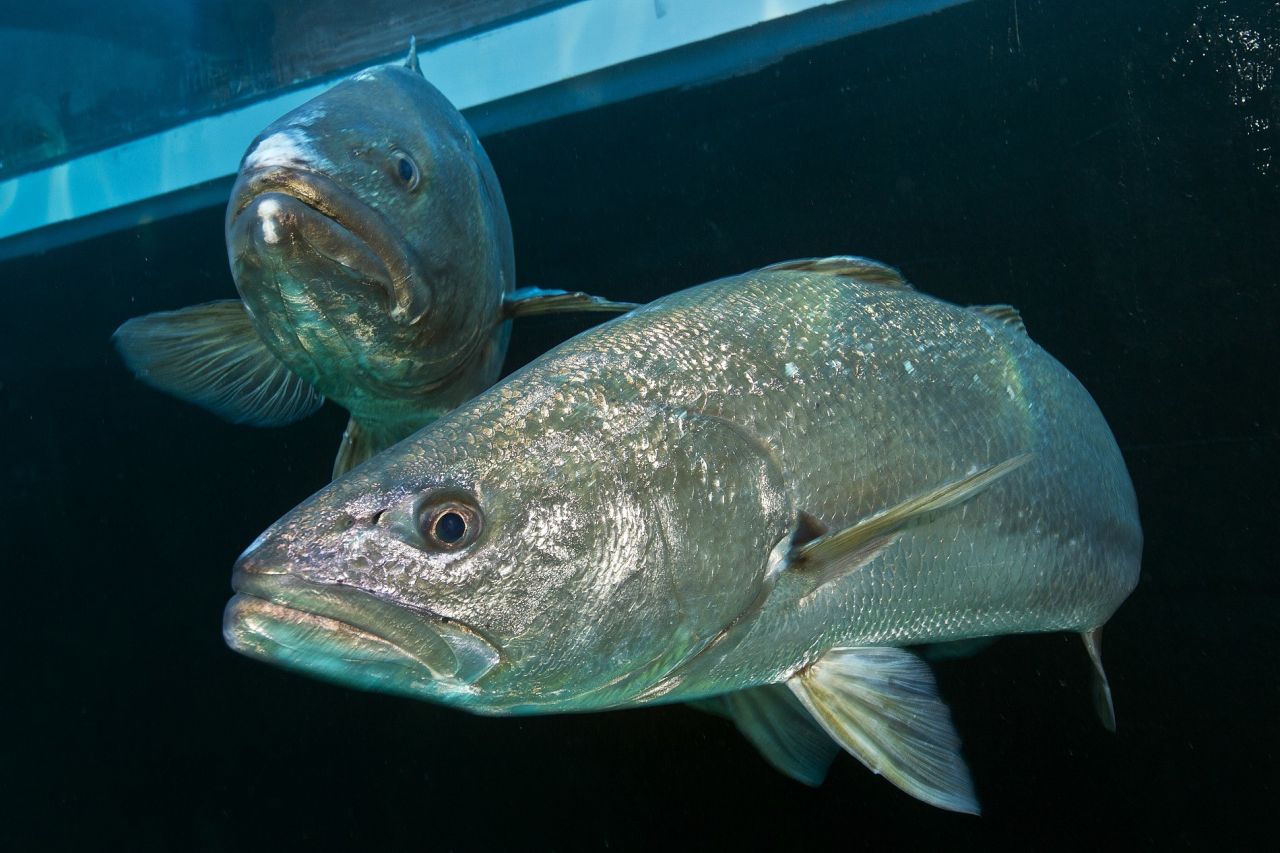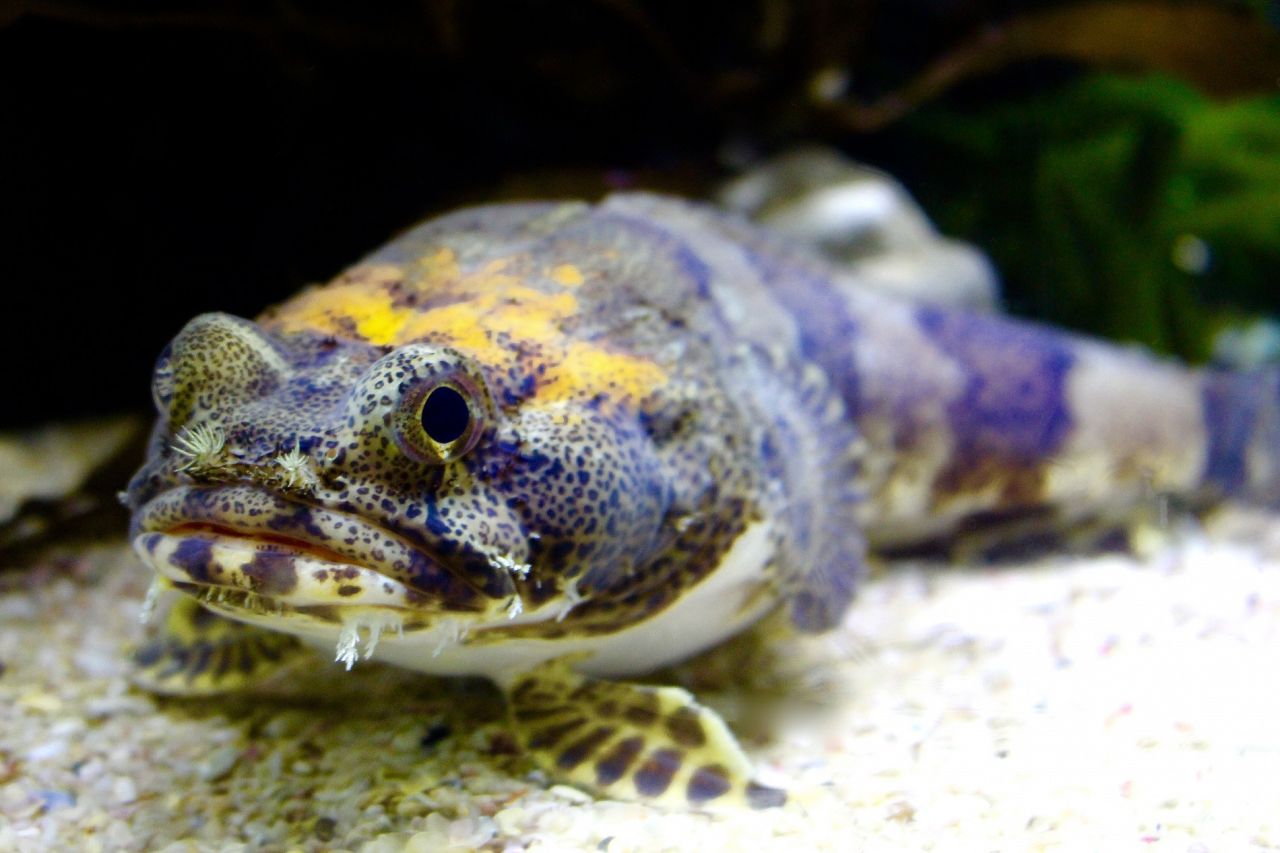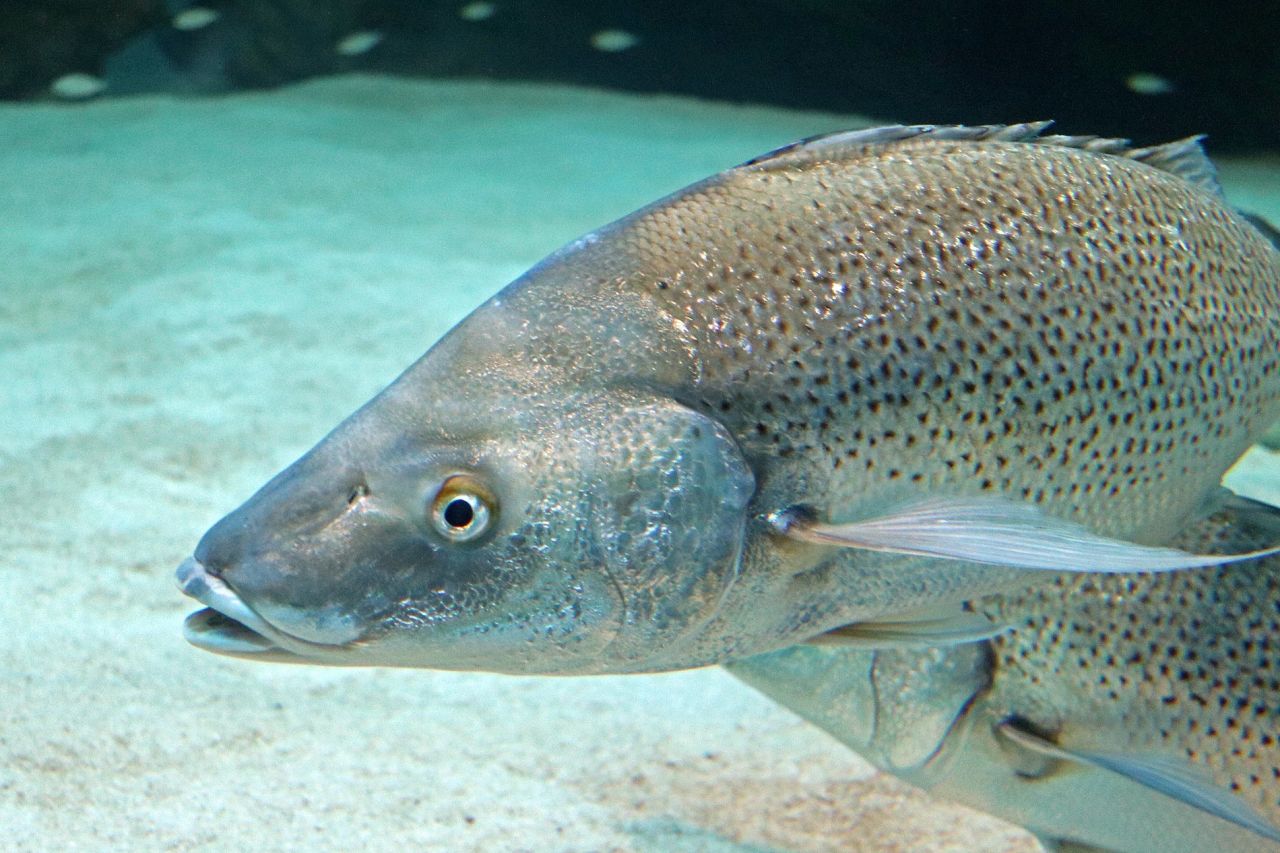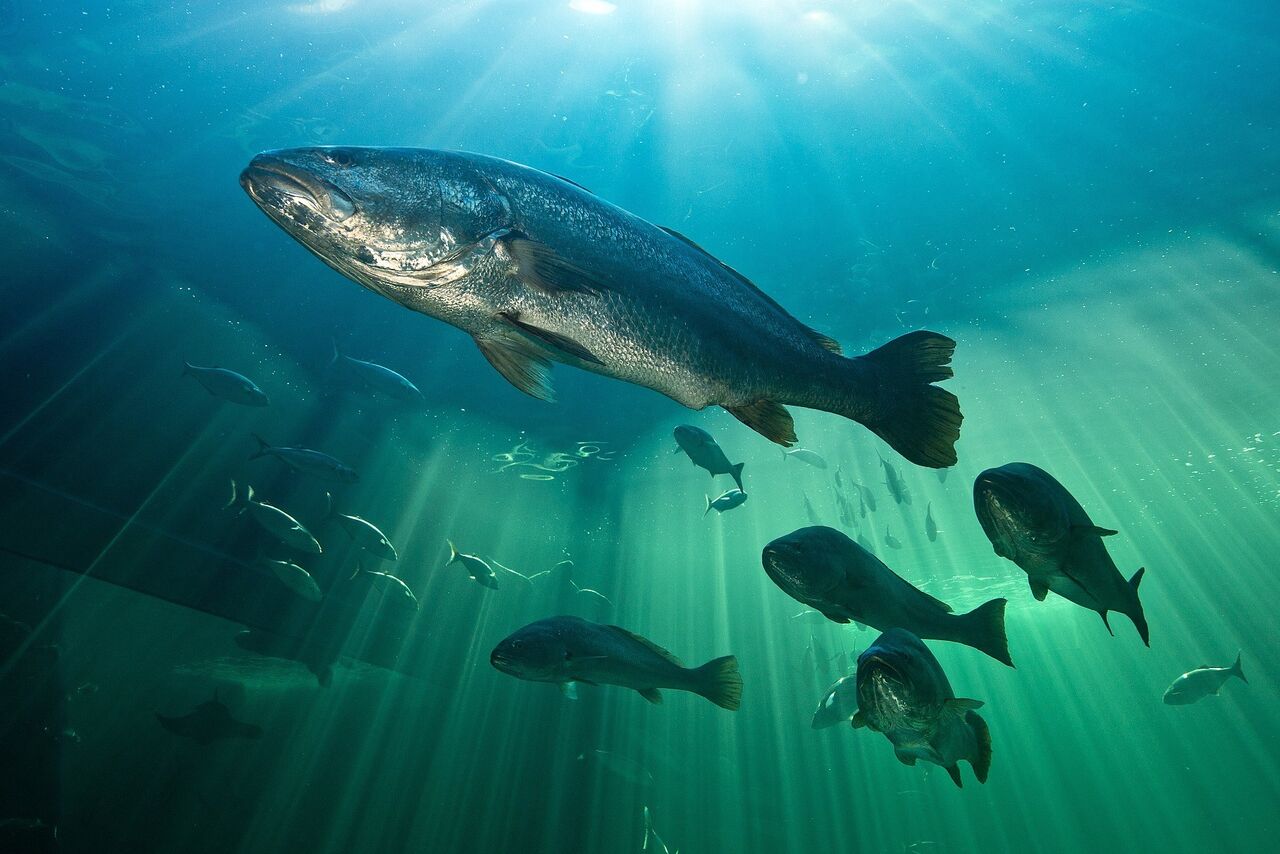We usually don't think of fish as noisy animals - in fact, most people have no idea that fish make sounds at all. Two Oceans Aquarium Foundation teacher Kirshia recorded a very vocal display from the Aquarium's giant kob at night in the Save Our Seas Foundation Shark Exhibit:
Hear that drumming sound? That's the sound of kob signalling each other (the kob, a.k.a. kabeljou, are the smaller fish milling about at the bottom in the above video). Kob are members of a family of fish called "drums" or "croakers" that all possess special muscles that allow them to vibrate their gas-filled swim bladder and produce sounds. These sonic muscles literally drum against the swim bladder. Sound must be pretty useful for fish to have evolved this ability, so what is it used for?
In giant kob (Agyrosomus japonicus) only males have these specialised sonic muscles, and they are only used during spawning season, both as a way of attracting females and of deterring other males. This vocalisation behaviour begins at sunset and continues for a few hours into the night over a few weeks during the mating season.
Bonus fact: The sonic muscles in croakers are the fastest contracting muscles in any vertebrate!
And although the chorus of male kob in the video may sound like one continuous drum, each male is actually capable of producing three distinct sounds - a short grunt, a long grunt and a short call (or "bup", "baaarp" and "thup" as the Australian FRDC calls them). The patterns of sound produced are influenced by the phases of the moon, the tide and other environmental conditions. These drum patterns, together with the deeper and louder druming of larger kob, may help the females select the most suitable mate in an area where their offspring will have the best chance of survival.

What other fish make sounds?
About 300 other species belong to the same Sciaenidae family as giant kob, and almost all of them are able to produce the came croaking sound by using sonic muscles to vibrate their swim bladders. Some of these species are actually able to use this communication ability outside of mating, and it helps them to deter others from stealing their food and to remain close to others in murky waters. Unfortunately, croaking is a dead giveaway to predatory dolphins, so species that share a habitat with dolphins tend to use their croaking sparingly.

Another way fish can make noise is called "stridulation". This is a sound made by rubbing bones, armour plates or teeth together. Examples of this are seahorses, which can produce popping sounds by rubbing the edges of their skull together, or some marine catfish which can "squeak" using specialised rays in their fins. At the Two Oceans Aquarium, you may hear the "grunts" of one of our spotted grunters which produce sharp sounds in their throats by rubbing their jaws together.

The ocean truly is a noisy place! If you'd like to learn more about the sounds of the ocean, check out the Discovery of Sound in the Sea project by the University of Rhode Island.





